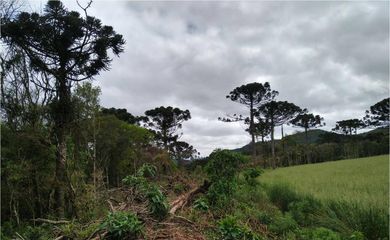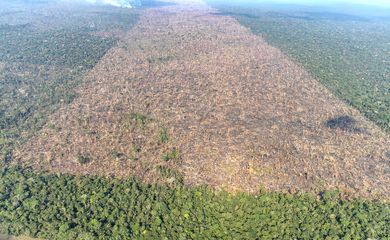Brazil lost 33% of its natural areas 1985–2023

Brazil’s land cover and land use continue to change as a result of human activity, increasing climate risks, a map released this week by MapBiomas shows. According to the study, which examines data from 1985 to 2023, the country has lost 33 percent of the natural areas in its territory, including native vegetation in Brazil’s five biomes, surface water, and non-vegetated natural areas—like beaches and dunes.

“The loss of native vegetation in Brazilian biomes tends to have a negative impact on regional climate dynamics and reduces its protective effect during extreme weather events,” Tasso Azevedo, general coordinator of MapBiomas, noted.
In the last 39 years, Brazil lost 110 million hectares of those areas—the equivalent to 13 percent of the country’s territory. The other 20 percent had already undergone change.
Municipalities
In the period surveyed, nearly half of Brazil’s 5,570 municipalities had a negative balance in natural area coverage. A gain in native vegetation occurred in 37 percent of them. The other 18 percent remained stable.
Biomes
Researchers have concluded that, by 2023, Brazil had only kept 64.5 percent of its native vegetation, apart from water surfaces and non-vegetated natural areas, like beaches and dunes, which add up to 2.5 percent of its territory.
Of the 110 million hectares of native vegetation suppressed, 55 million hectares were in the Amazon, 38 million hectares were in the cerrado, the caatinga lost 8.6 million hectares, and 3.3 million hectares were lost in the pampa.
The pantanal has seen a significant loss of surface water, which in 1985 represented 21 percent of the 15.1 million hectares of the biome in Brazil. In 2023, water represented only 4 percent of the pantanal’s territory. The areas of herbaceous and shrub vegetation expanded from 36 percent in 1985 to 50 percent of the biome in 2023.
The data available on Mapbiomas’ platform, researcher Eduardo Vélez Martin pointed out, make it easier to understand the territorial dynamics affecting losses over time. “We see, for example, that the cerrado and the pampa have a very high proportional loss—practically around 27 and 28 percent of what they had in 1985. This shows a rather large and accelerated trend of change over these 39 years, as opposed to other biomes, like the pantanal,” he stated.
Public forests
For the first time, we looked at the loss of vegetation cover in undesignated public forests—forests for which the government has not yet defined land use, like conservation units, indigenous territories, and forest concessions—which account for 13 percent of the Legal Amazon. As is stands today, these forests still have 92 percent of their area covered by native vegetation.
In the case of designated public forests, indigenous territories are the most preserved areas in Brazil, where the loss of native vegetation has been equivalent to less than one percent in 39 years. They correspond to 13 percent of the entire national territory.
Private areas
Natural areas have suffered the greatest impact on private properties, where the loss has been 28 percent in 39 years. Of the total 281 million hectares converted by human action by 2023, 60 percent are on private property. A 228 percent surge was reported in areas converted to agriculture and a 76 percent increase in areas converted to pasture after 1985.




